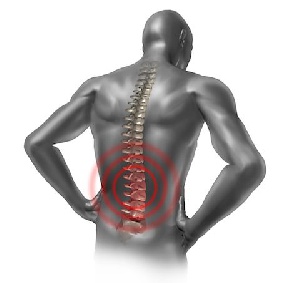 A backache is considered chronic if it lasts more than three months.
A backache is considered chronic if it lasts more than three months.
A common and frequently incapacitating ailment that impacts millions of individuals globally is chronic backache.
It is crucial to comprehend the causes, therapies, and preventative measures of chronic backache in order to properly manage this problem.
A backache is considered chronic if it lasts more than three months. It can have several causes, which frequently makes identifying just one difficult. Among the most common reasons are:
1.Disc degeneration: As we age, the discs that cushion our vertebrae may degrade, causing pain and suffering.
2. Herniated Discs: A disk that bursts or bulges can strain on nerves, producing excruciating agony.
3. Spinal Stenosis: This disorder causes the spinal canal to narrow, which may compress the nerves and spinal cord.
4. Muscle Strain: Back ligaments and muscles can be strained by frequent heavy lifting or abrupt, unnatural motions.
5. Arthritis: Chronic discomfort in the lower back can result from osteoarthritis.
6. Scoliosis: An aberrant curvature of the spine may also be a factor in persistent discomfort.
The symptoms of a chronic backache might range from a subtle ache to a strong stabbing pain. In addition, patients may feel stiff, have restricted range of motion, and have trouble standing up straight.
A thorough medical history, a physical examination, and imaging tests like CT, MRI, or X-rays are usually required for diagnosis in order to determine the underlying reason.
The goals of treatment for chronic back pain are typically multifaceted and include pain relief, function improvement, and quality of life enhancement.
Among the options are:
1. Medication: Anti-inflammatory medications, muscle relaxants, and over-the-counter pain medicines can all help control discomfort.
2. Physical therapy: A customized exercise regimen helps increase flexibility and strengthen back muscles.
3. Lifestyle Changes: Maintaining proper posture, controlling weight, and giving up smoking are all essential for lowering back discomfort.
4. Injections: By lowering inflammation surrounding the nerves, corticosteroid injections can offer momentary relief.
5. Surgery: To treat structural problems in the spine, surgical intervention may be required in extreme circumstances. Discectomy, in which a portion of a herniated disc is removed, and spinal fusion, in which two or more vertebrae are fused together to support the spine, are two examples of procedures.
An important part of treating chronic back pain is prevention. The following advice may help stop back discomfort from developing or getting worse:
• Frequent Exercise: Maintain spinal health by strengthening your back and core muscles via regular physical exercise.
• Ergonomic Practices: Make sure your work area is set up ergonomically to reduce strain whether standing or sitting for extended periods of time.
• Appropriate Lifting Techniques: Avoid twisting your body and raise heavy things using your legs rather than your back.
• Healthy Diet: To promote general health and lower the risk of back problems brought on by excess weight, maintain a balanced diet.
A person's quality of life can be greatly impacted by chronic back pain, but relief is possible with the right diagnosis and thorough treatment.
My mission as a neurosurgeon is to enable patients to take charge of their spinal health by educating them about their condition and all available treatment choices.
Through early intervention and prevention as a top priority, people may effectively manage chronic back pain and enjoy more rewarding lives.
To determine the underlying reason for persistent back pain and create a customized treatment plan, speaking with a healthcare provider is essential.
Chronic back pain can be reduced and general wellbeing enhanced with appropriate treatment and lifestyle modifications.